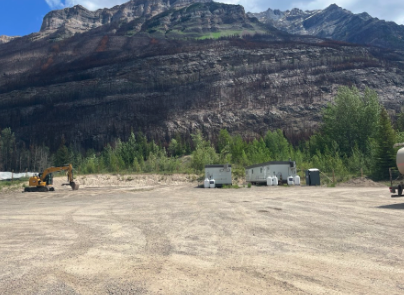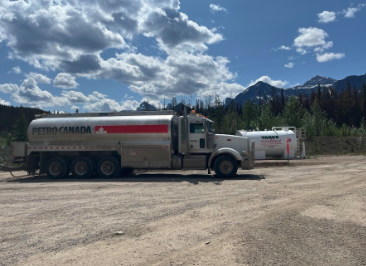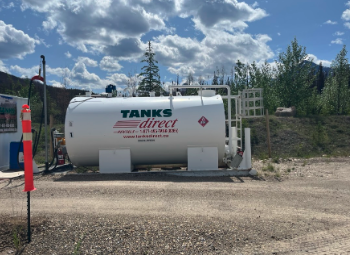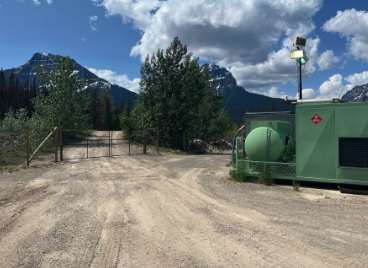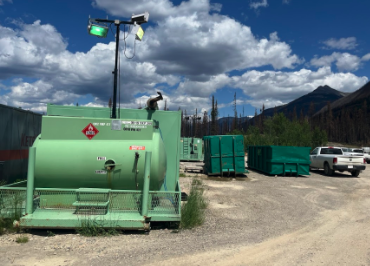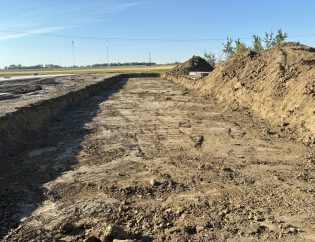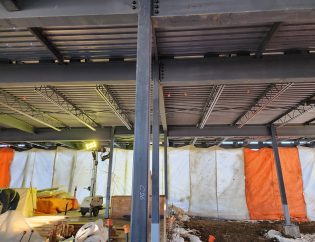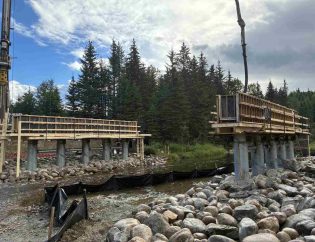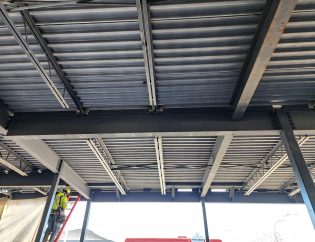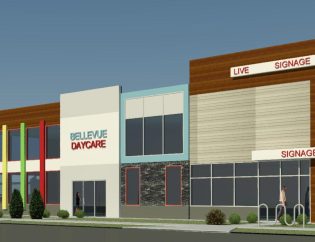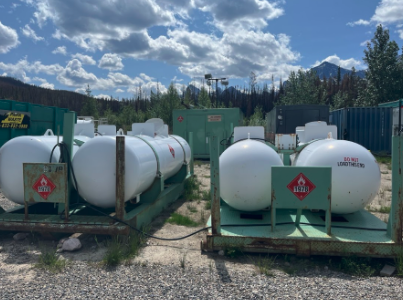
Before construction or redevelopment begins, it’s essential to understand what’s happening beneath the surface. The condition of the soil can reveal whether a property is safe, stable, and compliant with environmental standards. At MR Engineering Ltd., soil investigations are part of how we help clients make informed, responsible decisions about their sites.
Recently, MR Engineering was retained to conduct a soil investigation on a demobilized contractor camp site. The goal of the assessment was to confirm whether petroleum hydrocarbons (PHCs) were present in the soil and to evaluate the overall environmental condition of the property.
This investigation involved detailed fieldwork, laboratory testing, and professional interpretation of results, following all relevant Canadian environmental guidelines.
Purpose of the Investigation
The client requested that MR Engineering assess whether the site contained any hydrocarbon-related contaminants. The property had previously operated as a contractor camp, accommodating workers and machinery, which meant there was potential for minor fuel or oil residues from past operations.
The investigation focused on identifying contaminants of potential concern, specifically petroleum hydrocarbons, and determining whether concentrations exceeded the Canadian Council of Ministers of the Environment (CCME) Soil Quality Guidelines for the Protection of Environmental and Human Health.
Because the site and surrounding area are zoned for agricultural and forest use, MR Engineering evaluated soil results according to the CCME’s agricultural criteria for coarse-grained surface soils.
Scope and Methodology
The scope of work included reviewing available background information, collecting representative soil samples, analyzing them at an accredited laboratory, and preparing a report summarizing the methods, findings, and professional recommendations.
Soil samples were collected from three targeted areas across the site: the Coverall Area (CA), the Fuel Depot (FD), and the Generator Pad (GP). Each location represented a different type of potential impact. Samples were taken from a depth of approximately six to eight inches using clean tools provided by the laboratory.
Each sample was placed into new, laboratory-supplied containers, sealed, labelled, and stored in coolers to maintain integrity. Chain-of-custody documentation accompanied every step, from collection to delivery, to ensure sample traceability and compliance with QA/QC standards.
Quality Control
Field and laboratory work were completed following standard industry quality assurance and quality control (QA/QC) procedures. All tools used in the field were cleaned with distilled water between each sample to prevent cross-contamination. New nitrile gloves were worn at every collection point, and only fresh containers supplied by the laboratory were used.
Samples were clearly labelled with the company name, project number, location ID, and date of sampling. They were then stored in temperature-controlled coolers until delivery to the laboratory, accompanied by signed chain-of-custody forms.
This disciplined process ensured that each sample accurately represented on-site conditions and that laboratory data could be relied upon to make informed conclusions.
Laboratory Analysis and Results
The three collected samples were analyzed for Petroleum Hydrocarbons (PHCs) using CCME testing standards. PHCs are a broad group of chemical compounds derived from crude oil and are common indicators of potential environmental impact from past industrial activity.
The laboratory results were clear. All PHC concentrations in the collected soil samples were below their respective laboratory detection limits. This means that no measurable petroleum hydrocarbons were found in any of the samples.
When compared to the CCME Soil Quality Guidelines for agricultural land use with coarse-grained soils, every sample met or exceeded compliance standards. In other words, there were no hydrocarbon-related contaminants present that would pose a risk to human health or the surrounding environment.
Conclusions
Based on the analytical results, MR Engineering concluded that the soil samples from all three testing areas, the Coverall Area, Fuel Depot, and Generator Pad, were within safe limits for agricultural and forest land use.
The results confirm that the site does not contain PHC contaminants exceeding CCME Soil Quality Guidelines values. As a result, MR Engineering determined that no further subsurface investigation requirement at this time.
These findings provide the client with assurance that the property is environmentally sound and can continue to be used in its current capacity without additional remediation or monitoring.
Professional Judgment and Limitations
All work conducted by MR Engineering followed recognized standards of professional practice. Our conclusions are based on field observations, laboratory data, and conditions present at the time of sampling.
It is important to note that soil conditions may change over time due to site activities or environmental factors beyond the scope of this investigation. The selected sampling locations were chosen based on site conditions and client direction, representing the most likely areas of potential concern.
This investigation was limited to petroleum hydrocarbons and does not address other possible contaminants that were not part of the testing parameters. The findings apply only to the specific areas and depths sampled.
Despite these standard limitations, MR Engineering is confident that the sampling program and results accurately reflect current soil conditions at the site.
Why It Matters
Confirming soil quality is not only an environmental responsibility but also a key step in protecting the value and safety of any property. Even when no contamination is expected, verifying compliance with CCME standards provides peace of mind for owners, developers, and regulatory bodies.
For sites with industrial or construction histories, soil testing ensures that any potential impacts from past operations are properly identified and managed. By confirming that this property’s soil met all applicable environmental guidelines, MR Engineering helped the client demonstrate due diligence and maintain compliance with provincial and national standards.
Commitment to Responsible Practice
At MR Engineering, we are committed to delivering precise, code-compliant, and data-driven environmental reporting. Every project is completed with a focus on accuracy, transparency, and accountability.
Our environmental and geotechnical teams work together to provide clear, defensible results supported by sound engineering judgment. From soil investigations and groundwater assessments to full environmental site evaluations, we deliver the reliable data and professional insight needed to move projects forward with confidence.
We believe every successful project begins with a solid understanding of the ground beneath it, and we ensure you have the information required to make informed, responsible decisions.
Solid Data. Responsible Decisions.
If you require environmental soil testing or need to confirm that your property meets CCME and Alberta environmental standards, contact MR Engineering Ltd.
Edmonton Office: #112, 1803-91 Street SW, Edmonton, AB T6X 0W8
Phone: 780-807-0016
Email: info@mrengineering.ca
Website: www.mrengineering.ca
